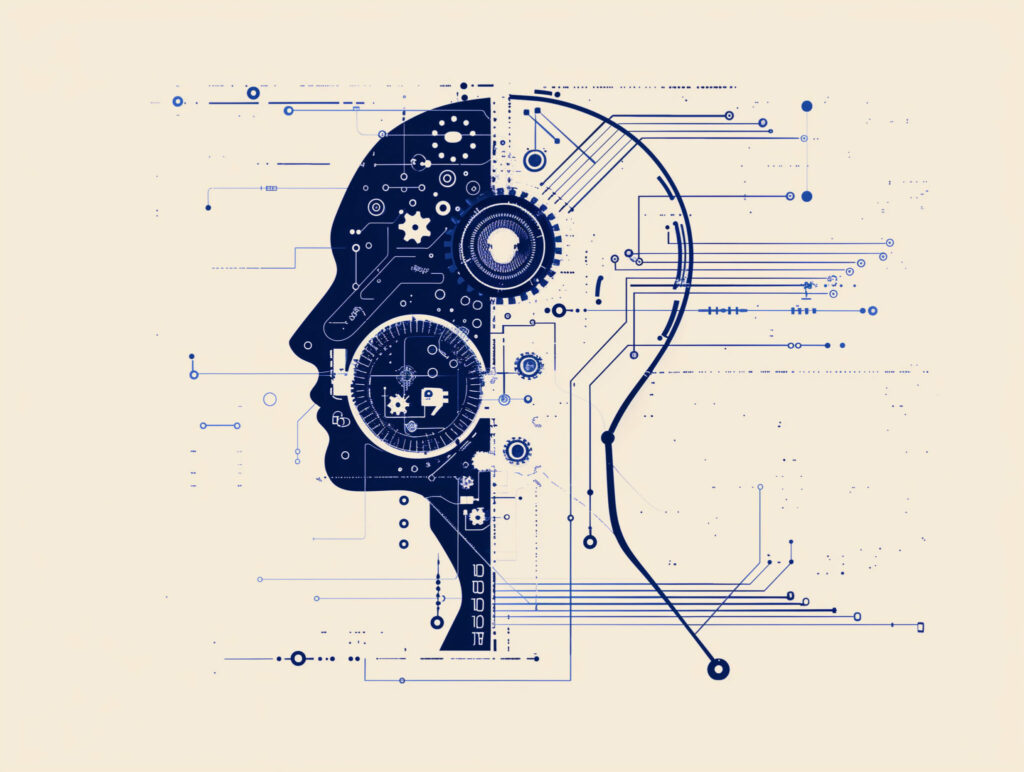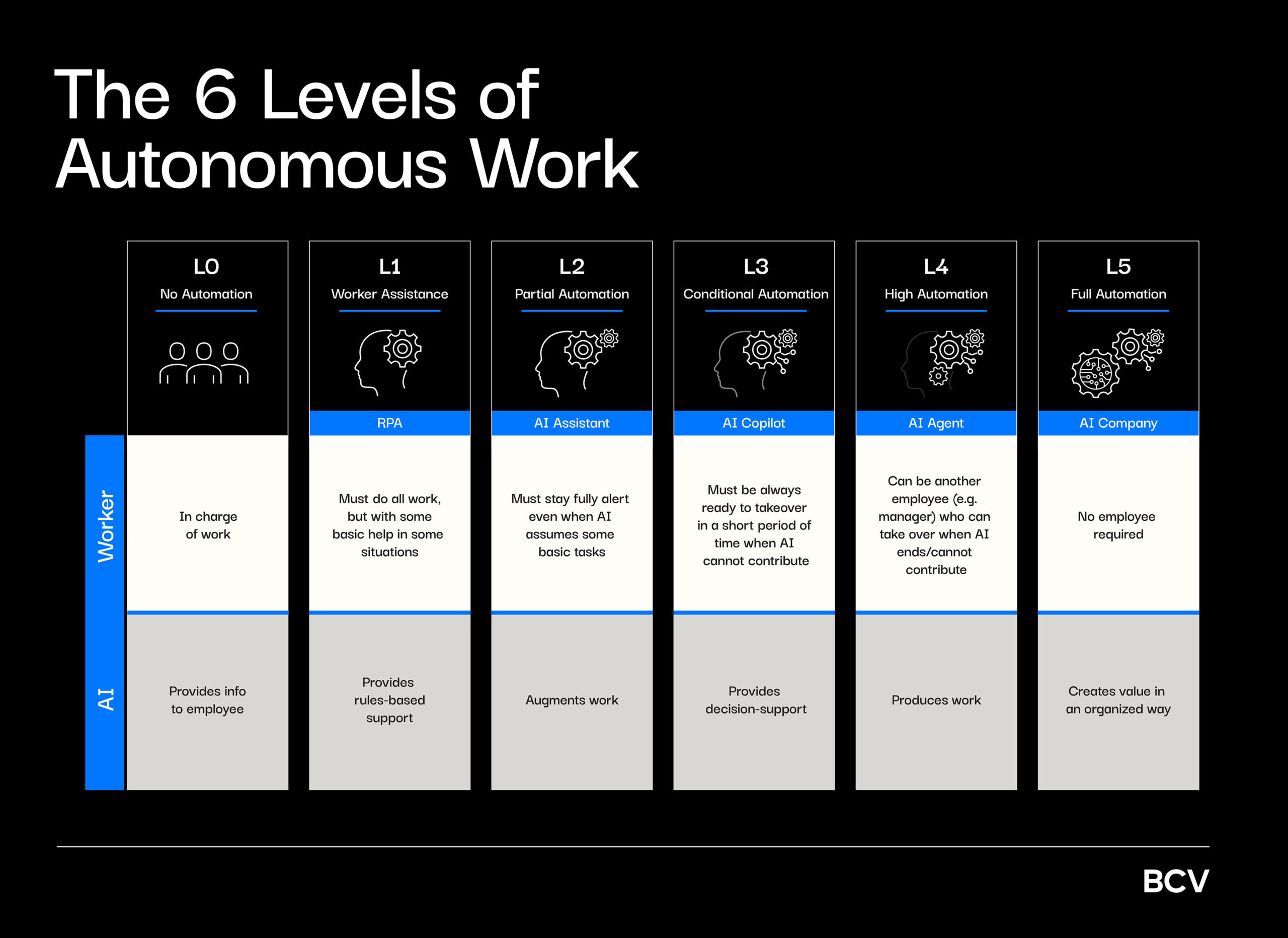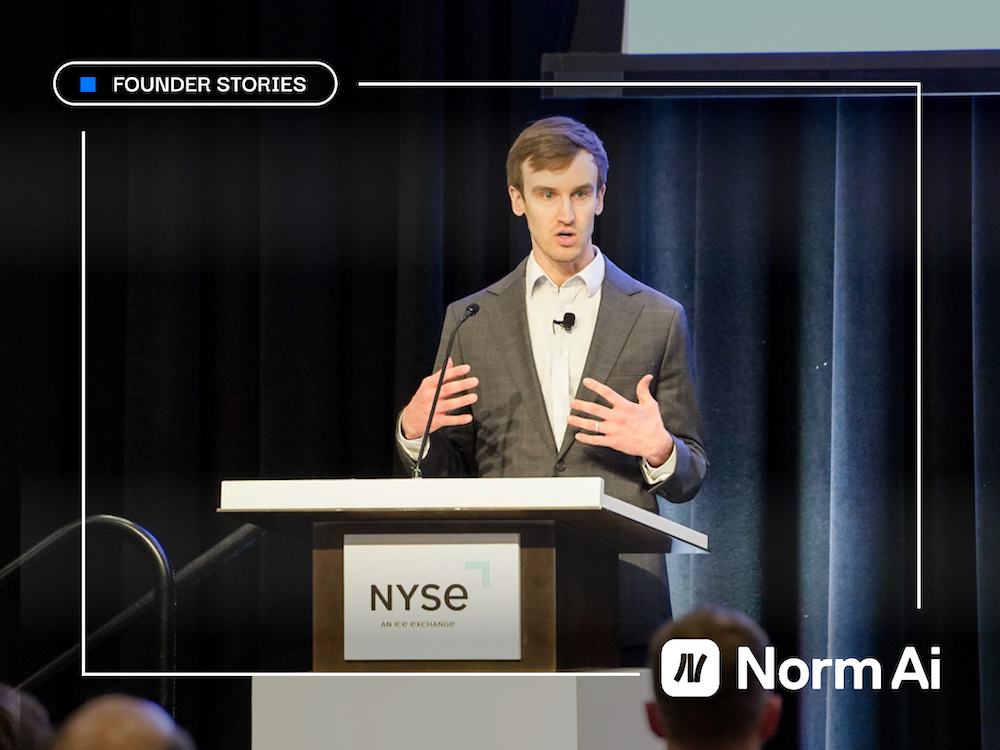

How AI-Powered Work Is Moving From Copilot to Autopilot
Our “6 Levels of Autonomous Work” framework will help you better demo and compare AI apps capabilities.
“Look Mommy! No driver!” My two year old knows that the white Waymo whizzing past our house in San Francisco, with all of the gadgets spinning off on every side, means that the car is driving on the street without a driver. For kids and adults alike, it’s magical.
Approved by regulators to drive without a supervision driver in August 2023, Waymo fulfilled the dream of autonomous vehicles that began decades earlier. Waymo wasn’t, however, the first company to put autonomous driving features on the road — Tesla had these features available much earlier. The difference is that Waymos are more autonomous than Teslas.
What does that mean? In 2014, the Society of Automotive Engineers introduced the Levels of Driving Automation to define the spectrum of autonomous driving from Level 0 (no driving automation) to Level 5 (full driving automation). Waymo is an example of Level 4 technology (“High automation”) whereas Tesla is Level 2 (“Partial driving automation”).
Frameworks like this are powerful because they help us classify and contextualize technology. Once we understand the “level” of a new car, for example, we know what we can expect from the car, and to what other cars it compares. That’s why we applied that lens to how AI is reshaping how we work, and we hope that the 6 Levels of Autonomous Work framework will allow you to best represent your company or best understand a company you’re considering doing business with.
But first, some context.
How can we compare levels of AI autonomy?
Since ChatGPT was released on November 30, 2022, the promise of generative AI to reinvent our world has captured our imagination. We learned new words like “transformer” and “LLM,” and understood that “generative AI” was distinct from “predictive AI.” We saw an explosion of tools with the suffix “-GPT,” and rushed to embed “AI assistants” into our products. In the apps layer, “AI copilots” are everywhere, and more recently, “AI agents” have emerged.
In the last batch of 260 YC companies, for example, seven companies identified as “assistants,” 13 as “copilots,” and nine as “agents.” But what, exactly, are the differences among these companies? Very few know. And, among the 260, many more are AI companies, but without a consistent vocabulary, we can’t identify or differentiate among them.
Classification has been a void in this AI platform shift. Founders and buyers alike are looking for ways to demonstrate and compare AI capabilities. Enter: a new framework for the Age of AI.
What defines the ends of the spectrum is whether the worker pulls information from the AI to support the human’s decision-making or the AI pushes work to (or, in lieu of) the worker. On one end of the spectrum are “AI assistants,” AI that enhances the productivity of humans to perform tasks. Then you have “AI copilots,” which are productivity-enhancers for humans that also support decision-making. At the other side of the spectrum are “AI agents,” which can act autonomously on autopilot. AI at any level may be embedded within the product, or stand alone as a separate experience from the existing product.

How can we use the Levels of Autonomous Work?
Founders, consider where your technology falls along the spectrum, and use this vocabulary to describe yourself to employees and buyers. Each level has advantages and disadvantages in terms of ROI, implementation complexity and cost. Own where you are, and explain the reasons why this is the ideal tradeoff between human and AI work for the particular use case. Be wary of overstating your level of automation, or you may overpromise and under-deliver. The fastest way to demise is acquiring customers, then disappointing them and churning through them.
Buyers, consider the ideal level of automation for different jobs across the organization. Ask potential vendors to identify where their technology falls along this spectrum. As you proceed to the right from Level 0 to Level 5, you’ll experience higher ROI and easier implementation, but it will also require higher trust that the AI exactly understands your use cases and has durable mechanisms to kick out of the autopilot to a (trained) human in emergency situations.
Reflecting on past platform shifts, we use language to discriminate between old and new, until everything is reinvented. Some companies were “Internet” companies until all companies had a digital component and we lost the terminology. Similarly, some phones were “smartphones” until all phones became smart. While it’s hard for us to see this now, I expect that we’ll use this terminology to differentiate among levels of AI within companies until all companies become fully automated and all companies are “AI companies.”
Related Insights


MagicSchool’s AI-Powered Software Is Ushering in the Future of K-12 Teaching
MagicSchool founder Adeel Khan is a former teacher and principal whose AI platform is saving teachers time, fighting burnout, and helping schools build responsible AI experiences for students.

Norm Ai Is Using AI to Clean Up the ‘Sludge’ of Regulatory Compliance
John Nay, a founder at the intersection of AI and law, built Norm Ai as a solution to aid compliance officers in highly regulated industries.
